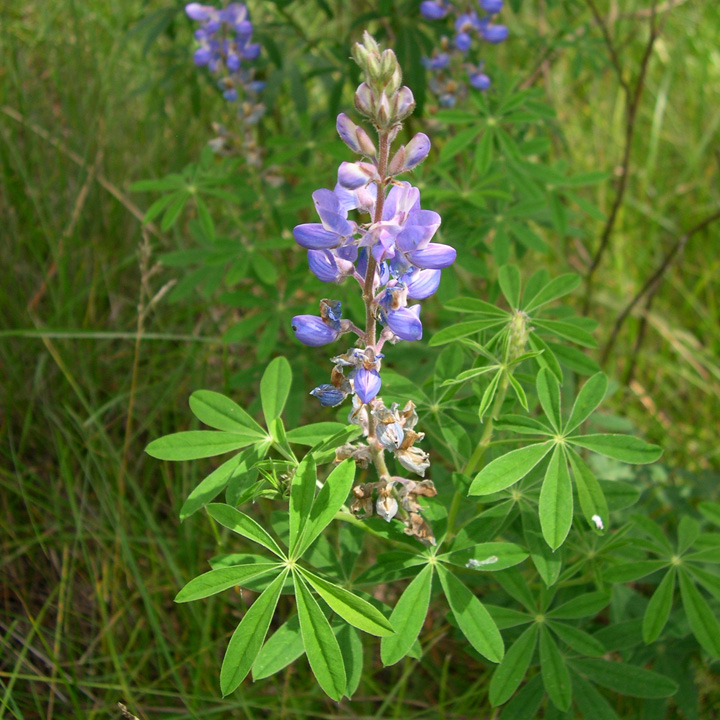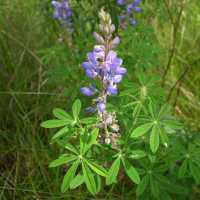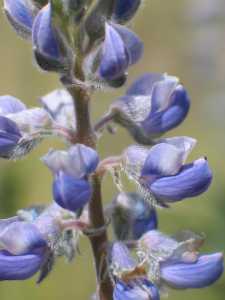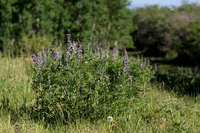Lupinus argenteus is found in middle to upper elevations in the spring and early summer. The most commonly seen variety in the Gila appears to be a deep blue to purple. The base of the calyx has a backward bulge (gibbous) that differentiates it from other perennial lupines in the Gila. Allred lists 11 varieties which intergrade.
Duration: Perennial
Nativity: Native
Lifeform: Subshrub
General: Herbaceous perennials, to 1.5 m tall, stems erect, strigose below, glabrous to glabrescent above, the silvery hairs of the stems and petioles appressed.
Leaves: Alternate, palmately compound with 5-10 leaflets, leaflets linear to oblanceolate, 2-7 cm long, less than 10 mm wide, very acute to obtuse at the tips, green and glabrous to silvery silky-hairy above, generally hairy below, leaves with stipules 2-12 mm long.
Flowers: White or light to dark blue or purple, bilabiate, 5-14 mm long, upper lip 4-8 mm, 2-toothed to entire, lower lip 4-8 mm, entire to 3-toothed, the banner petal sometimes with a yellow to white spot and usually with long, soft-silky hairs in the center of the back, upper keel margins ciliate, lower keel margins glabrous, calyx spur distinct, 1-3 mm, gibbous at the base, sometimes short-spurred on the upper side at the base, stamens monadelphous, anthers dimorphic, alternately elongate and short, flowers borne in dense terminal racemes, these 2-8 cm long.
Fruits: Flattened pods 1-3 cm long, hairy to silky, usually constricted between the seeds. Seeds tan, brown or red, 2-6 per pod.
Ecology: Found in montane and open coniferous forests and sagebrush scrub, from 3,500-11,500 ft (1067-3505 m); flowering June-October.
Distribution: Dakota and Montana, south to New Mexico and Arizona.
Notes: This species is differentiated from the similar L. lemmonii by distribution; L. argentus occurs in the northern portions of the state at higher elevations, and determination is difficult, so collect it if possible. This may not always occur, but if the leaves are bright green and glabrescent above, and sericeous (silky-hairy) below, the species is likely L. argenteus, if silky-hairy on both sides, the species is likely L. lemmonii, (be sure to check against other indicators). is recently merged with the former L. palmeri. Also note that Tropicos has 74 synonyms for this species(!), and that most of the varieties for this species have been merged into L. argentus. Jepson notes this species is highly variable.
Ethnobotany: There is no specific use of the species, but a poultice of the crushed leaves of Lupinus argentus subsp. ingratus was applied to poison ivy blisters.
Synonyms: Many, see Tropicos
Editor: LCrumbacher 2011
Etymology: Lupinus comes from the Latin lupus for "wolf," alluding to the belief that these plants robbed the soil of nutrients, which is the oppposite of the truth, while argenteus means silvery.







